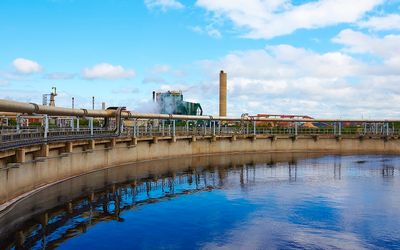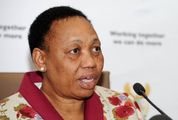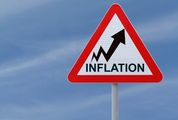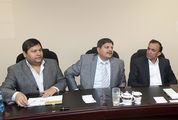Water withdrawals in SA likely to increase in next 20 years
by Staff Writer,
2016-03-23 18:38:22.0
SA IS overexploiting its water resources‚ and runs the risk of continued water shortages, unless more is done to close the gap between how much water is utilised and how much is available.
This is according to University of Denver researcher Steve Hedden‚ who worked at the Institute for Security Studies (ISS) until December last year.
His paper‚ Parched Prospects II‚ published by the ISS on World Water Day on Tuesday‚ states that the proposed interventions to increase supply and reduce demand are inadequate.
Additionally, Mr Hedden says it is likely that water withdrawals at municipal‚ provincial and national spheres of government will increase over the next two decades‚ adding to the challenge.
Water withdrawals across the country are expected to increase to 18.9km3 by 2035. By then‚ even with the expansion of the Lesotho Highlands Water Project‚ the country's available water will be 17.8km3‚ which is 1.1km3 less needed to meet demand.
He writes that although "droughts are inevitable‚ a stable water sector can mitigate the negative consequences of droughts. SA is a dry country‚ but through integrated long-term planning‚ it is possible to maintain a reliable supply of water for all."
Most water in SA is surface water — in other words‚ water that flows on the surface of the earth and is held in dams. "Not all surface water is available for withdrawal‚ however. Some surface water must be retained in dams and rivers to maintain the ecological health of the water system or because of downstream requirements."
Among the measures that the government needed to implement was additional use of groundwater‚ which Mr Hedden describes as an "overlooked" source.
Wastewater treatment also had to be considered‚ but there were question marks over the quality of the country's wastewater treatment plants.
Nonrevenue water — water that is either unbilled or ‘lost’ before it reaches the consumer — needed to be urgently addressed as‚ according to estimates‚ more than one-third of SA’s water could be considered lost.
TMG Digital

A water treatment plant. Picture: SUPPLIED
SA IS overexploiting its water resources‚ and runs the risk of continued water shortages, unless more is done to close the gap between how much water is utilised and how much is available.
This is according to University of Denver researcher Steve Hedden‚ who worked at the Institute for Security Studies (ISS) until December last year.
His paper‚ Parched Prospects II‚ published by the ISS on World Water Day on Tuesday‚ states that the proposed interventions to increase supply and reduce demand are inadequate.
Additionally, Mr Hedden says it is likely that water withdrawals at municipal‚ provincial and national spheres of government will increase over the next two decades‚ adding to the challenge.
Water withdrawals across the country are expected to increase to 18.9km3 by 2035. By then‚ even with the expansion of the Lesotho Highlands Water Project‚ the country's available water will be 17.8km3‚ which is 1.1km3 less needed to meet demand.
He writes that although "droughts are inevitable‚ a stable water sector can mitigate the negative consequences of droughts. SA is a dry country‚ but through integrated long-term planning‚ it is possible to maintain a reliable supply of water for all."
Most water in SA is surface water — in other words‚ water that flows on the surface of the earth and is held in dams. "Not all surface water is available for withdrawal‚ however. Some surface water must be retained in dams and rivers to maintain the ecological health of the water system or because of downstream requirements."
Among the measures that the government needed to implement was additional use of groundwater‚ which Mr Hedden describes as an "overlooked" source.
Wastewater treatment also had to be considered‚ but there were question marks over the quality of the country's wastewater treatment plants.
Nonrevenue water — water that is either unbilled or ‘lost’ before it reaches the consumer — needed to be urgently addressed as‚ according to estimates‚ more than one-third of SA’s water could be considered lost.
TMG Digital




















Change: -0.47%
Change: -0.57%
Change: -1.76%
Change: -0.34%
Change: 0.02%
Data supplied by Profile Data
Change: -1.49%
Change: 0.08%
Change: -0.47%
Change: 0.00%
Change: -0.04%
Data supplied by Profile Data
Change: -0.27%
Change: -0.22%
Change: -0.23%
Change: -0.22%
Change: -0.23%
Data supplied by Profile Data
Change: -0.28%
Change: -1.15%
Change: -0.07%
Change: -1.21%
Change: -0.22%
Data supplied by Profile Data